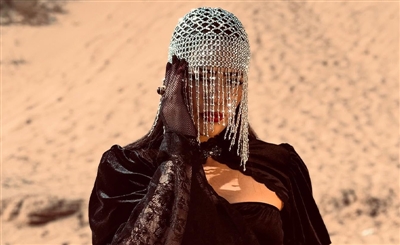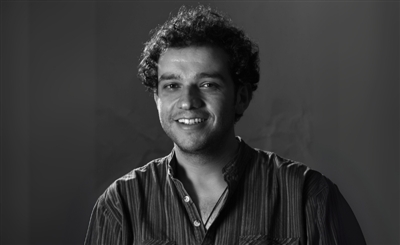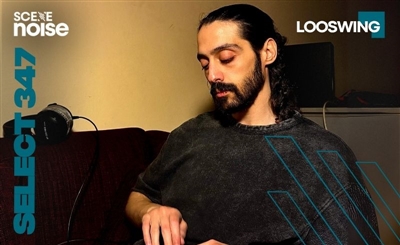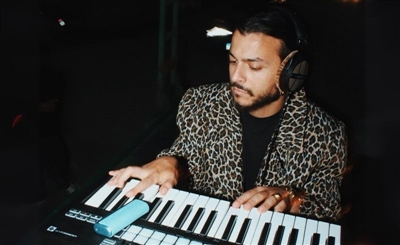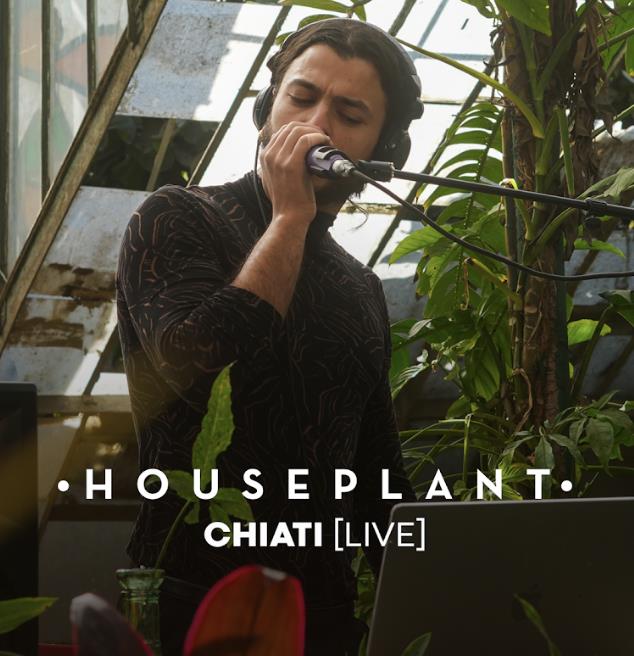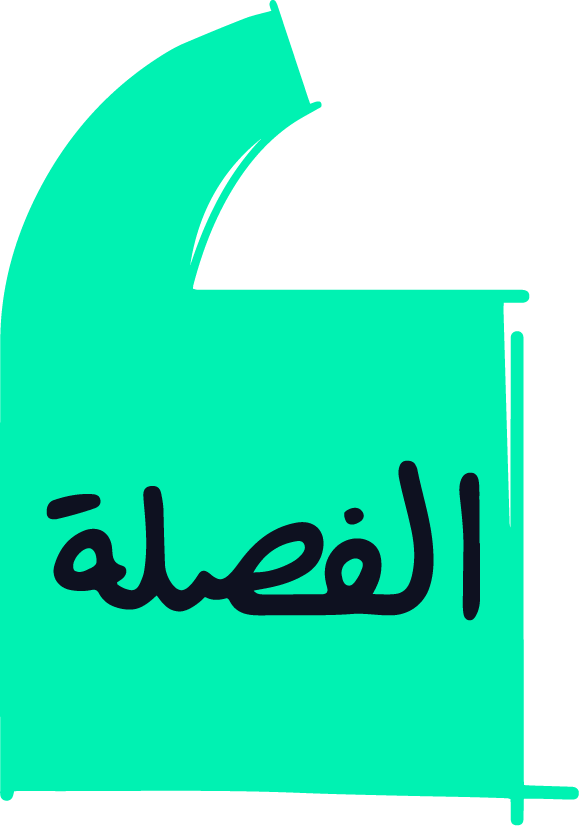Christmas in Mourning: Preserving Bethlehem's Traditions Amid Genocide
In this interview, we discuss the tragic realities behind the piece, echoing the frustration and grief of Arabs around the world.
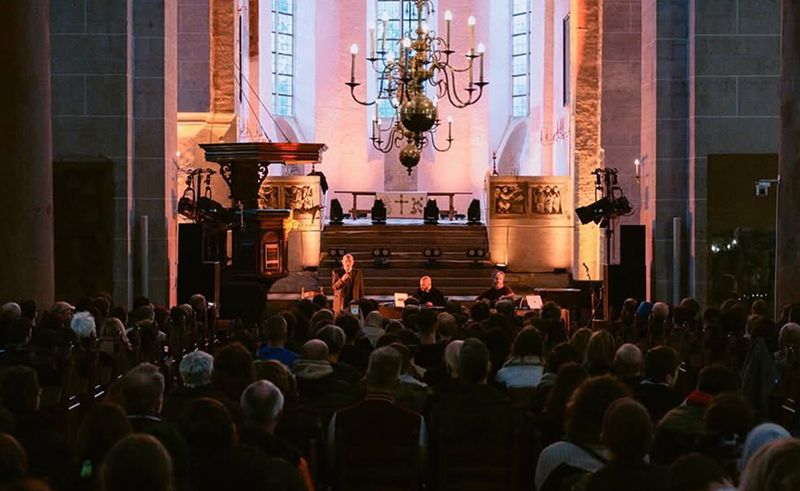
Photography by Tess Janssen
Bethlehem, located in the occupied West Bank in Palestine and the birthplace of Jesus Christ, is a city that comes alive during Christmas, with visitors from around the world attending the city's colorful parades and celebrations. However, since the start of Israel’s genocide against the people of Gaza in 2023, Christmas in Bethlehem has been canceled until further notice. The streets that once echoed with church bells and joy are now eerily silent during the holiday.
The significance of this cancellation was not lost on the teams at Palestinian online radio platform Radio Al Hara and Bethlehem-based not-for-profit production and cultural hub Wonder Cabinet, who decided to document this dark moment by commissioning Christmas in Mourning, a 30-minute piece reflecting on a period of immense sorrow for the Arab world. They approached Laurence Sammour, the head of the choir at Bethlehem’s Church of the Nativity, about the piece, in which Lebanese electro-acoustic musicians Sary Moussa and Abed Kobeissy would reinterpret ceremonial Christmas hymns and recitals through the lens of mourning and resilience.
Though he had not ventured far from his musical background with the church, 86-year-old Sammour agreed, lending his powerful voice to the experimental project. He collaborated remotely with the Lebanese artists to create a deeply moving and dynamic composition, as travel restrictions between Palestine and Lebanon prevented Moussa and Kobeissy from meeting Sammour in person.
Their first in-person meeting took place in Utrecht, where they performed Christmas in Mourning live at Pieterskerk, one of the city’s oldest churches, as part of the Le Guess Who? festival. The debut performance, imbued with raw emotion, resonated profoundly with the audience, leaving many on the verge of tears.
In this interview, SceneNoise spoke to co-founders of Radio Al Hara and Wonder Cabinet, Elias and Yousef Anastas, Radio Al Hara creative producer and key figure Ibrahim Owais, and Lebanese electro-acoustic musicians Sary Moussa and Abed Kobeissy, who, together with Laurence Sammour, crafted this powerful piece.
Q: How did it feel to finally meet in person in Utrecht for your performance at Le Guess Who?
Sary Moussa: It was very emotional for all of us. It was our first time ever meeting Laurence, after working on such a heavy project. I think none of us were expecting it to be as touching as it was. Before the show, or even before the soundcheck, the first time we saw Laurence and started playing music, we were in the lobby of the hotel, where they had given us a room to rehearse in. We were all a bit tense since we hadn’t ever performed the piece together, but I think at that moment, we all realized just how deeply we all felt about Christmas in Mourning.
Abed Kobeissy: We met Laurence in Utrecht at around midnight, in the lobby of the hotel, and he told us how unwell he felt, as after a long flight from Bethlehem, the 86 year old was held in the airport for investigation, as the authorities were suspicious of his intentions traveling to the Netherlands, though he was invited to by Le Guess Who? and had all of his paperwork in order. They insisted that he had no “reliable proof of returning to Bethlehem.” Ibrahim was with him at the time, I believe. Ibrahim Owais: This whole issue started with Laurence’s visa actually. The first time we applied for the visa was from Ramallah, and I was under the impression that it would be me whose visa wouldn’t be issued. But to our surprise, I had gotten the visa, while Laurence’s was rejected. One of the reasons behind the rejection was that he didn’t have “sufficient proof” that he intended on returning to Palestine, even though the return flights were booked and the festival had flown in dozens of artists from around the world. In the end, we tried applying again after contacting some people to help speed the process up, and his visa was issued mere days before the performance.
Ibrahim Owais: This whole issue started with Laurence’s visa actually. The first time we applied for the visa was from Ramallah, and I was under the impression that it would be me whose visa wouldn’t be issued. But to our surprise, I had gotten the visa, while Laurence’s was rejected. One of the reasons behind the rejection was that he didn’t have “sufficient proof” that he intended on returning to Palestine, even though the return flights were booked and the festival had flown in dozens of artists from around the world. In the end, we tried applying again after contacting some people to help speed the process up, and his visa was issued mere days before the performance.
Abed: When he finally arrived at the hotel, he was telling Elias and Sary the story, and his eyes were turning red as he was speaking. Not from sadness but from frustration. We all called it a night after that, and the next day, when we went into the room in the lobby to rehearse, we only had an acoustic Buzuq, and Laurence’s vocals. I think the second we started rehearsing, we realized that what happened with Laurence at the airport left an emotional mark on him that informed his performance, amplifying the already heart-wrenching essence of the performance.
As we rehearsed, we started to realize that there were some aspects of the performance that still weren’t 100% thought through, and there were still some question marks in some parts of the piece. Everything was happening so fast, issues were coming up left and right, some of the pitches of the instruments weren’t matching, some of the tempos were out of sync, a lot of small technical issues kept popping up. But at that point, there wasn’t much we could do. It was our first time ever performing together so we just had to power through as many of the issues as we could in soundcheck.
As we stepped into the Pieterskerk church in Utrecht for our soundcheck, the second Laurence got behind the microphone and just tested his vocals, everything changed as we heard his powerful voice reverberating in the church. The interrogation at the airport was behind us. The issues with the visas were completely out of our minds. It was like our failed rehearsal in the lobby never happened, and the three of us felt like we were back in Christmas of 2023, working on the piece for the first time.
When Laurence started singing in the church, everything gelled together. That’s where the project was born, in the church, where Laurence feels most at home. The project had two births, one in 2023 as we composed and recorded it, and one in Pieterskerk in Utrecht, as we finally met and performed it together as a trio. We were all overwhelmed by all of this, and I’m sure you could see it on our faces during the show. Q: Can you tell me about the project’s “first birth” in 2023, and how you decided to collaborate with Laurence on this piece?
Q: Can you tell me about the project’s “first birth” in 2023, and how you decided to collaborate with Laurence on this piece?
Elias Anastas: It honestly started before 2023. Basically, in 2021 or 2022. Yousef and I were both raised in Bethlehem, and Laurence has always been a part of our lives there, and we’ve basically known about him since we were born. His presence and work with the church have been extremely impactful on our lives, and on the lives of nearly everyone in Bethlehem.
And so in 2021 or 2022 we had our first opportunity to work with him outside the context of the church. We went and spoke to him, but we were worried about his openness to the project, as he had never worked in music outside of the church, and the project we were working on didn’t have any ties to the church or his everyday world. So we approached him, keeping in mind the possibility that he wouldn’t be interested in working on music outside of the church, but to our surprise, he was extremely open to the project from the very beginning of our conversation, and he started suggesting some ideas and building the concept along with us. This project was also a collaboration with Sary Moussa and Yara Asmar, and it tied into the work we were doing with Radio Al Hara that aimed to connect artists in Palestine and Lebanon.
This had been a main objective of the radio ever since it launched, since travel between the two countries is extremely restricted, and there was little communication between their music scenes. Our work also aimed to show how resistance can be achieved through artistic collaborations between the two countries, and how we can amplify the ideas coming out of these communities.
So ever since that project, we began talking between ourselves about how this project and this collaboration can be expanded, and what else we can do together. And so last year, as we all witnessed Israel’s ongoing genocide in Gaza, Christmas festivities in Bethlehem were canceled. This was a huge deal, as Bethlehem is a historically significant site for Christians around the world, and world-famous Christmas festivals had overtaken the entire city each year until that point. Bethlehem has a population of around 30,000 people, but during Christmas, hundreds of thousands of people come here to celebrate in Jesus’ birthplace. So we thought that since Christmas in Bethlehem was cancelled, we had to document this unprecedented tragedy. With our platforms through Radio Al Hara and Wonder Cabinet, we thought surely we can do something to honor this timeless tradition. So we got the idea to produce ‘Christmas in Mourning’, which takes traditional religious recitals, which are typically performed by Laurence in Bethlehem’s Church of the Nativity, and reimagine them through the lens of grief and sorrow, and we connected Laurence with Sary Moussa and Abed Kobeissy who produced and composed the deeply moving piece.
So we thought that since Christmas in Bethlehem was cancelled, we had to document this unprecedented tragedy. With our platforms through Radio Al Hara and Wonder Cabinet, we thought surely we can do something to honor this timeless tradition. So we got the idea to produce ‘Christmas in Mourning’, which takes traditional religious recitals, which are typically performed by Laurence in Bethlehem’s Church of the Nativity, and reimagine them through the lens of grief and sorrow, and we connected Laurence with Sary Moussa and Abed Kobeissy who produced and composed the deeply moving piece.
Q: What was Laurence’s role during the Christmas celebrations taking place in Bethlehem each year until this point?
Elias: Laurence has been reciting in the church for over 50 years, and he is 86 years old now. Every year, the festival starts on the 24th of December, and the 7th of January (for the Roman Orthodox Christians celebrating). Laurence has been there every year, from 11 PM to 4 AM singing the recitals and bringing life to the festival. This is where everyone in Bethlehem knows him from, and why he’s an extremely respected figure in the community.
Q: Can you tell me how the compositional process was informed by religious recitals?
Sary: Essentially, the piece was built on recitals that are sung in the church during the Christmas festival in Bethlehem, or ones that are related to Christmas. This was our launching point, but when we started working on the piece, and while our music is usually categorized as experimental of textural, Abed and I had immediately agreed to be bound by two things: the context in which the piece is being written, since these are unprecedented times and we’re making music in the middle of a genocide in Gaza, and while Lebanon was on the brink of war with Israel. It was also a time when Christmas was not being celebrated, and we were very sensitive to this while working on the piece. Another thing we agreed on, was to respect the tradition associated with the recitals we were working with. We wanted to stay in that same sonic universe, we wanted it to be relatable to Laurence, to the church, and to the every day listener. These were our guidelines when we started.
The piece took us five days to complete in total. But these five days were extremely strange, because Abed and I would sit and work on the piece for 12 hours a day. And I don’t mean 12 hours of hanging around and taking breaks while working, these were 12 straight hours a day of composition and production. The recorded vocals were sent to us from Bethlehem, where they had sent us three a cappella recordings, from which we chose two and started composing around them. We were very diligent in our work, and not because of any rush or any deadlines, but because we felt a sense of responsibility while working on the piece.
These five days went by almost magically. We would work for hours and hours but I have no idea what we were doing. The whole process is a blur.
Abed: Yes, that’s true, I don’t remember any steps, or the evolution of the piece, I just remember that we sat down for days and came out of it with the finished piece. I think it was an overflow of different emotions, and I think what played a part in that, is that both Sary and I have a deep connection to these recitals, and for all of our musical careers, we were waiting for an opportunity to explore this type of music in our work in a way that is authentic and respectful. Q: What were some of the challenges you faced while working on the piece?
Q: What were some of the challenges you faced while working on the piece?
Abed: Again, I think there’s a fine line between approaching something with respect, and allowing yourself to imbue your style and character onto a centuries-old tradition. We were careful with the way we approached it but we were also expressing ourselves through this music. But some things we agreed upon beforehand. For example, we agreed that there wouldn’t be any solo sections or sections in which the music would venture out of the sonic universe it was paying homage to. Everything is happening in one place musically.
Q: How were you able to achieve this consistent sound through composition and arrangement?
Abed: Actually, the majority of sounds you hear on the recording were made from the sound of a Buzuq, which was then processed and sound designed, so the sounds feature similar harmonic content and overtones. I think the way it was sound designed resulted in sounds that the listener wouldn’t even recognize, and could not pin down what their source was. I really do think that one of the components that led to the success of this project was its sonic unity. You don’t really look at it as an arrangement or a composition. It’s just an amorphous evolution of sounds.
Sary: I also really just want to make clear that we don’t want to take the spotlight away from Laurence on this piece. He’s at the core of the whole project, and everything we did musically was informed by this and stems from the reverence and inspiration that Laurence brings us. Musically, everything starts from a place where Laurence is the focus, and goes to a place where Laurence is the focus.
Q: Watching you perform live, you used unusual techniques to play the Buzuq, such as the use of a bow, was this implemented in the recordings as well?
Abed: No the bow wasn’t used while recording, but it’s something that we developed for our live performance in Utrecht. It’s also something that’s never really done traditionally while playing the instrument.
Sary: While we were recording, we didn’t have the bow. But once we started using it to prepare for the live show, we incorporated it in a way where I was bowing the strings while Abed was holding down the notes and chords. It was an extremely unusual playing technique but it came from us trying to push the limits of the instrument to replicate the sound design we had done in a live context.
Q: How was the piece received when it was initially released in 2023?
Sary: I remember a few days before Christmas, we had sent it out to radio stations around the world, and it ended up broadcasting on over 50 international stations. The reaction to the piece was very powerful. The whole world was emotionally charged by these events, and people from around the world were reaching out and expressing their admiration for the piece. It felt very surreal. Q: To Elias, Yousef, and Ibrahim, what experience have you gained from this project and how will it be relevant to your work with Radio Al Hara and Wonder Cabinet?
Q: To Elias, Yousef, and Ibrahim, what experience have you gained from this project and how will it be relevant to your work with Radio Al Hara and Wonder Cabinet?
Yousef: Honestly, working with Laurence and getting the opportunity to meet him felt like a dream. He truly leaves a mark on anyone he meets. We’ve known him since before we were born to tell you the truth. Our parents, and our community all knew and respected him greatly. He was reciting at my baptism, and at Elias’ as well. He recites at any occasion happening in Bethlehem, so it’s hard to overstate his importance to our community.
There’s a strong bond between him and the people of Bethlehem. It’s a small city and a small community, and Laurence has sung at virtually every wedding, and every ceremony in the church. He represents so much to the city and to everyone living here. We’re very grateful and honored to have worked with him to present this pillar of our culture, and to work on a project that’s musically unusual and novel for him.
Because of the occupation, here in Palestine, we’ve faced a sort of isolationism, that has effects both on the community, which may lead to a sort of closed mindedness, and on the culture, which limits it from reaching the rest of the outside world. We believe that this project challenges both of those issues, by taking ceremonial pieces of music that hold centuries of history and culture, and presenting them through the lens of two of the region’s most talented electro-acoustic musicians and producers.
Q: Will you continue to work with Laurence after this piece? What are some projects you have in store with him for the future?
Elias: We’re currently talking about expanding this project further, and seeing what else Laurence, Sary, and Abed can work on in the future. We’re also working on more live performances of ‘Christmas in Mourning’ in multiple locations around the world. We’ve also filmed the performance in Utrecht, and will be screening it in select locations, starting in Bethlehem with Wonder Cabinet.
Yousef: Also, through Wonder Cabinet, we’ve been thinking for a while about how we can better represent our culture musically. Here in the Arab world, it’s extremely difficult to make a living off of music, except if you’re in the working class music economy. Usually, these are traditional musicians who play at weddings, or in the case of Laurence, with the church, and we want to venture into projects that help us better represent this section of the music scene.
While the full release of ‘Christmas in Mourning’ is still on the horizon, you can listen to excerpts from the piece here.
- Previous Article Shreet Cocktail Christmas Edition: Dec 11 - 24
- Next Article Trap Meets Shaabi: Is It Overused?
Trending This Week
-
Aug 04, 2025
-
Aug 02, 2025



